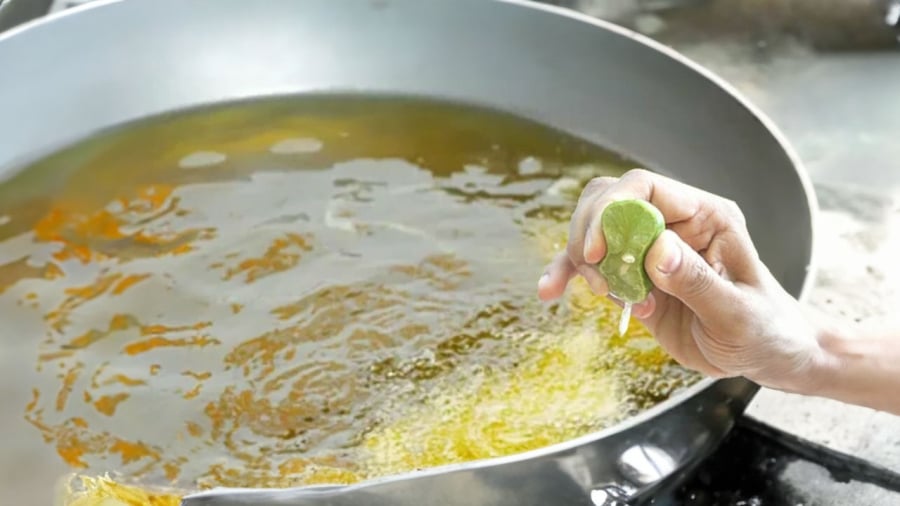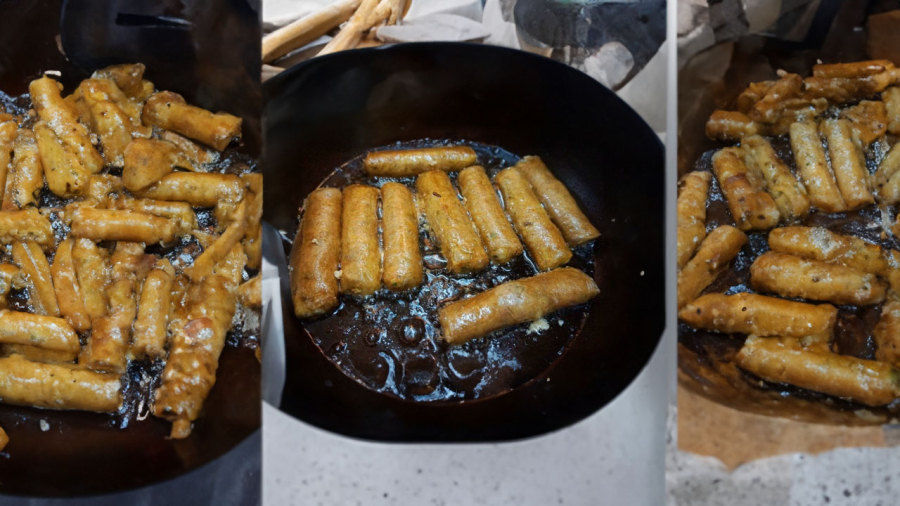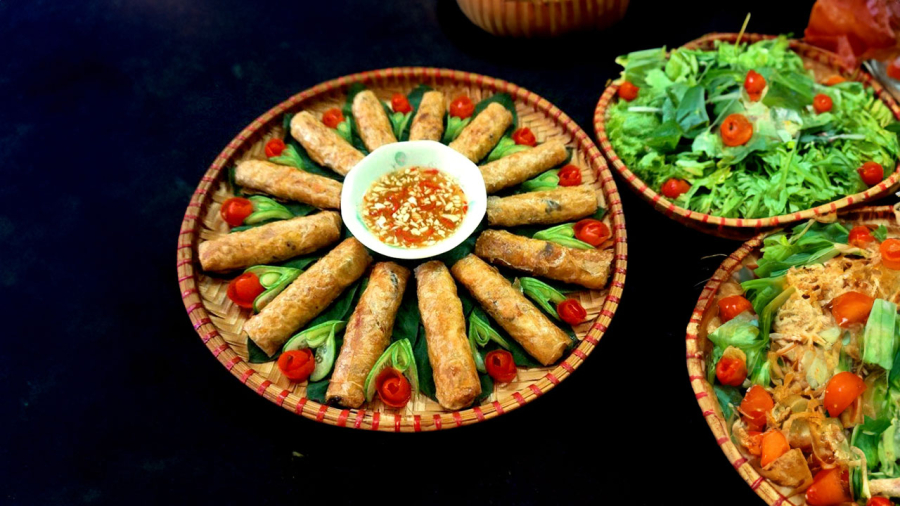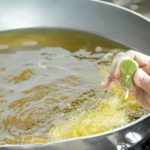Fried foods often require a crispy texture without being burnt. When frying, you often have to endure the heat and the fear of splashing oil. Careless people can get burned by splashing oil, frying food for a long time makes the food dry and unappetizing.

Use fresh lime
Experienced chefs and homemakers have a great tip to make their fried foods crispy and maintain their crispiness for longer.
There are a few ways to use lime for frying:
Place lime slices into the hot oil, then use chopsticks to swirl the lime slices around the pan.
Squeeze a few drops of lime juice into the oil before adding the ingredients to be fried.
Lime has acidic properties and creates bubbles. Therefore, when adding lime to the frying oil, it helps the fried food become crispy quickly and create bubbles. This helps you save frying time, the food becomes crispy quickly without getting soggy, and it maintains its crispiness for longer. Especially for fried foods with starch such as doughnuts, fried spring rolls, fried pho… adding lime to the frying process will make the food fluffier and the starch part expands quickly, making the food delicious and beautiful, and it won’t get soggy quickly. So make use of a few slices of fresh lime.
Moreover, adding lime also makes your food more fragrant while frying and prevents oil splatters.

Add a bit of starch
To make fried food crispy quickly and maintain its crispiness for longer, sprinkle a bit of starch into the frying oil (you can use tapioca starch, cornstarch, flour, crispy flour). You only need a small tablespoon. Sprinkling starch into the frying oil helps absorb the moisture in the food, so it doesn’t splatter oil outside, and you don’t have to worry about getting burned. The presence of starch in the frying oil makes your food crispier and more fragrant.
But remember, you only use starch to prevent oil splatters, not to coat the outside of the fried food. So just a little bit is enough. If you use too much, it will burn and give off a burnt smell.

Add a few pinches of salt
Similarly, if you’re frying savory food, adding a few pinches of salt to the frying oil will help make the food crispy and not splatter oil.
In addition, to make the fried food crispy and delicious, you should pay attention to the following tips:
Always dry the pan before adding oil
If the pan is not dry when you add oil, it will cause more oil splatters. So dry and heat the pan before pouring in the oil, but don’t let the pan smoke, as it will make the oil taste bad.
Control the hotness of the oil before adding the food to fry
A crucial technique for making fried food crispy on the outside and tender and moist on the inside is to control the temperature of the oil before adding the food to fry. If you add the food when the oil is not hot enough, the food won’t form a crust on the outside, making it soft and chewy or it may break, and it will absorb a lot of oil inside, making it greasy or dry. Therefore, observe the oil in the pan, when you see it swirling and chopsticks make small bubbles around it, it’s time to add the food to fry. This way, it fries quickly, the outside becomes crispy, and the inside remains tender.
Remember to completely thaw or dry the food before frying. Avoid adding partially thawed food as it will make them cook on the outside but continue to release water from the inside, so the food will break apart and become soggy. Before frying, you should also dry the food if it is sticky.
When preparing to scoop out the food, increase the heat a bit to make sure the food is well-drained. If you keep the heat low, the oil will penetrate the food a lot, and when you scoop it out, the paper won’t absorb all the oil because the oil has already soaked inside, so the food will become greasy and soft quickly.






































